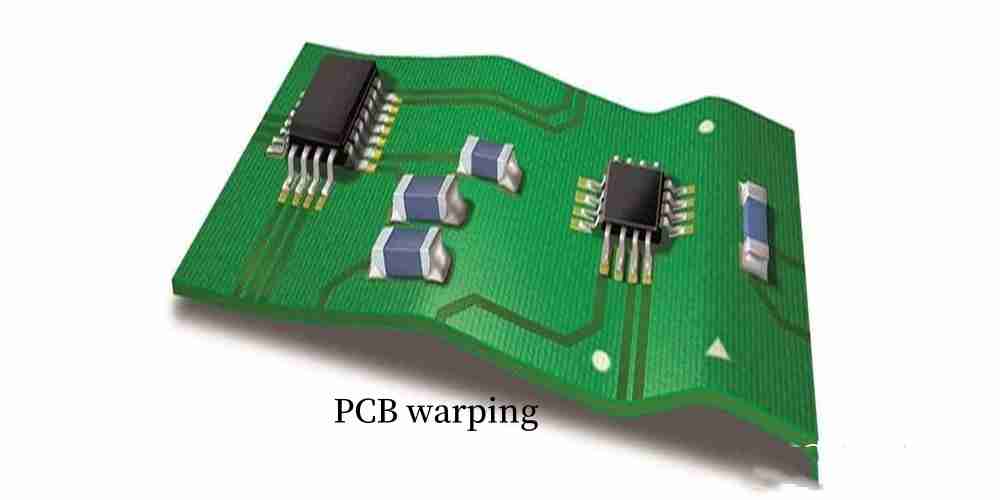Common deformation problems of PCB boards during the reflow process include bending and warping:
Bending: The PCB board is curved as a whole or in part, which may be caused by uneven mechanical or thermal stress.
Warping: The PCB board appears twisted or bent on the circuit board. It is usually due to thermal stress during the PCB assembly manufacturing process.
The main reasons for PCB bending and warping are as follows:
• During the reflow process, the PCB board will experience temperature changes and generate thermal stress, which will cause the PCB board to deform.
• The material properties of the PCB board also affect its possibility of deformation. For example, materials with a large thermal expansion coefficient are more likely to deform.
• The design of the PCB also affects the likelihood of deformation. For example, the larger and heavier the board, the more likely it is to deform.
Take the following measures to prevent PCB board bending and warping :
Temperature Control: Accurately controlling the reflow oven’s temperature is crucial to avoid deformation caused by thermal stress.
Use a reflow oven with a smaller temperature gradient and avoid sharp temperature changes to reduce the impact of thermal stress on the PCB board.
Preheating stage: During the preheating stage of the reflow oven, the temperature is gradually increased to ensure that the entire PCB is heated evenly. It helps to reduce the generation of thermal stress.
Cooling stage control: Control the speed of the cooling stage to avoid excessive cooling causing thermal shrinkage, which causes board warping. Progressive cooling can help to reduce thermal stress.
Hot board design: During the PCB design stage, we can consider hot board design by adjusting the shape and material distribution of the PCB board to make it more stable during the reflow furnace process.
Material selection: Choose materials with a small thermal expansion coefficient to reduce the impact of thermal stress. Materials with good rigidity can also reduce the possibility of bending and warping the PCB board.
Process optimization: During the manufacturing process, use a low-temperature lamination process, uniform heating reflow process, and low-force drilling process to reduce the impact of mechanical and thermal stress.
Deformation detection: After completing the PCB board manufacturing, Do a denaturation detection, which can promptly detect and deal with any problems that may cause bending and warping.
The above comprehensive improvement measures can more effectively prevent the bending and warping of PCB boards during the reflow furnace process, ensuring the production of high-quality and stable electronic products.







